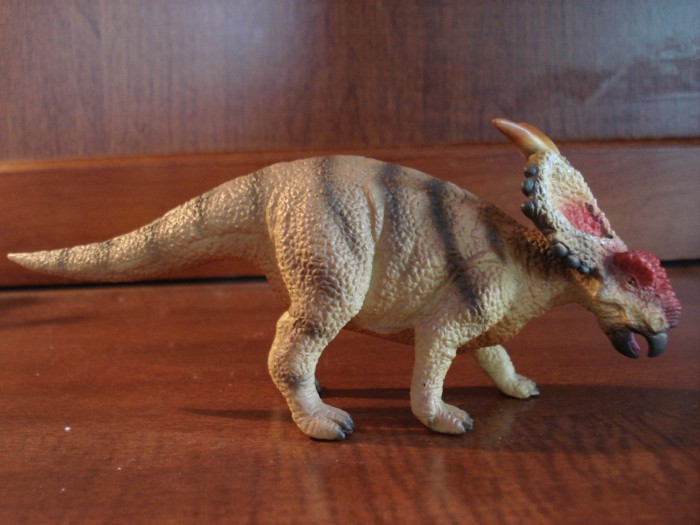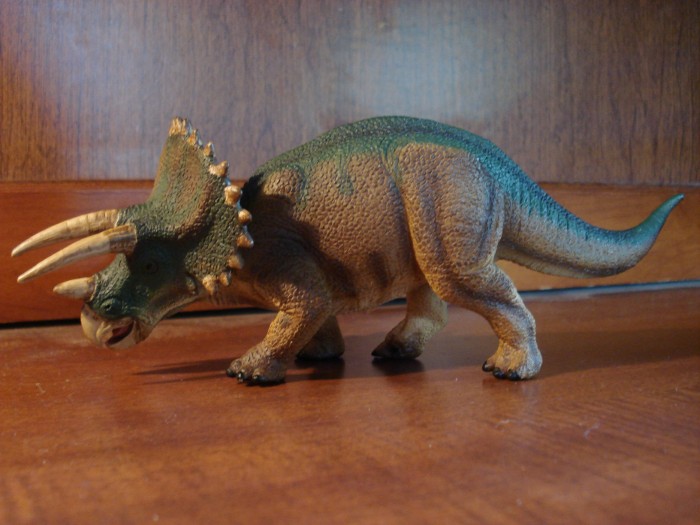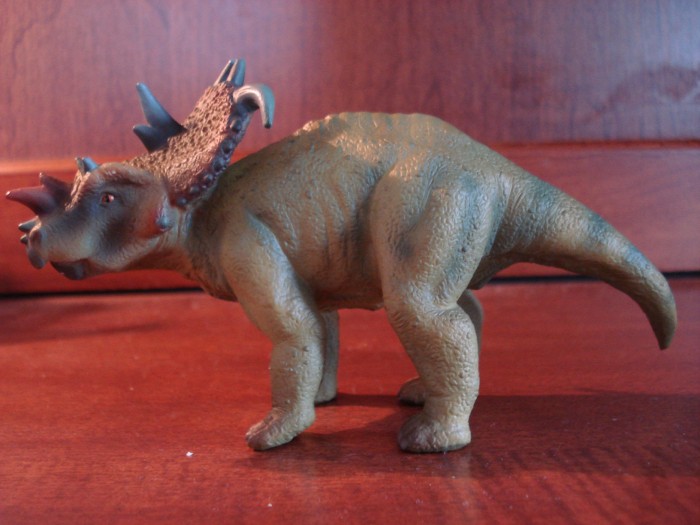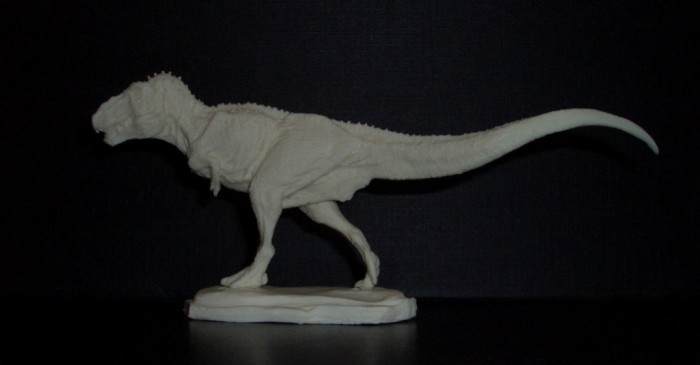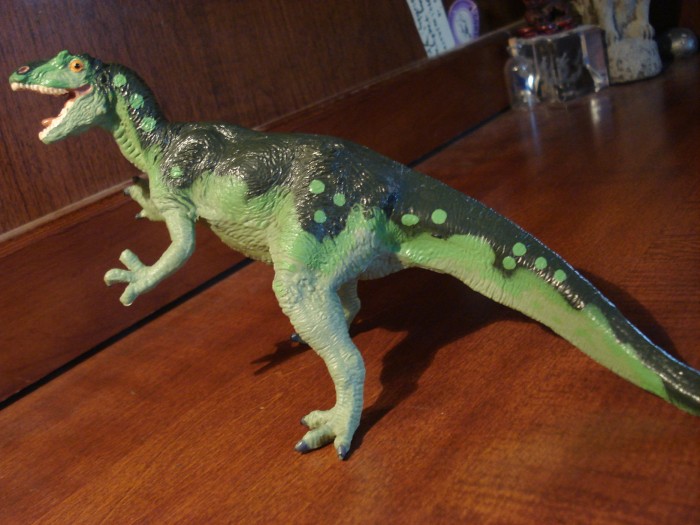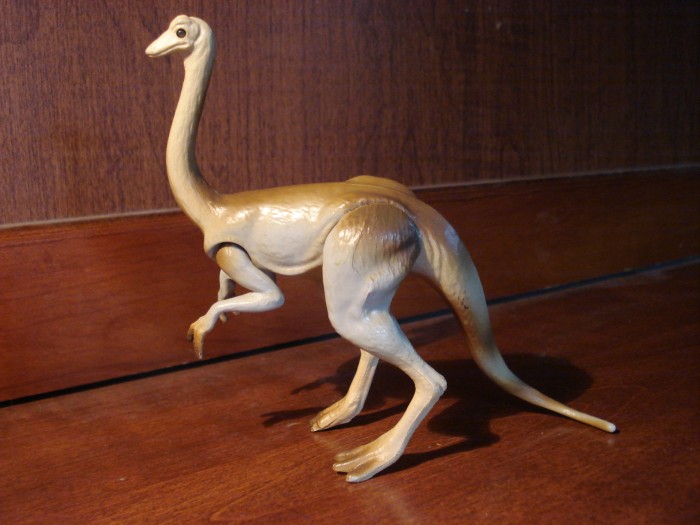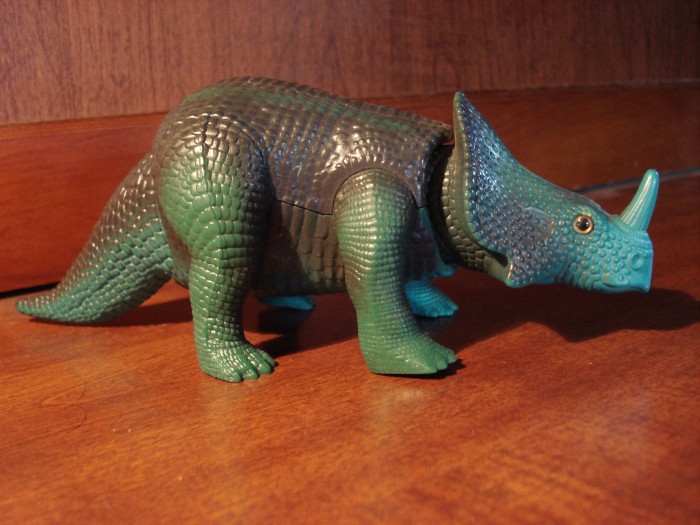Review: Achelousaurus (Antediluvia Collection)
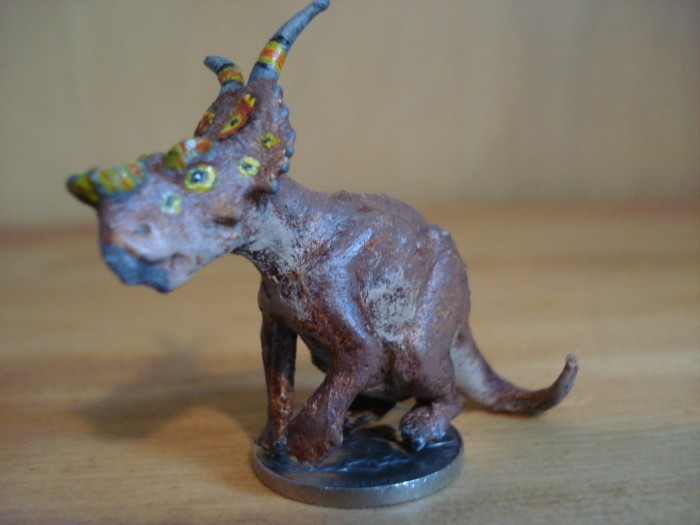
3.6 (8 votes)
Yes, another Achelousaurus and yes, that’s a nickel its standing on. Let me introduce the second member of the Antedeluvia collection to be reviewed here on the blog, David Krentz’s rendition of Achelousaurus. If you would like more information on this particular ceratopsian dinosaur simply scroll down a bit and read the first paragraph of my review for CollecA’s version of it.

 Chris DiPiazza (aka Griffin8891) has worked with exotic animals for seven years now and has been a wildlife exhibitor, bringing live animals to camps and schools to educate children, for almost four years. In addition to living animals, he has an equally, if not stronger affinity for prehistoric ones as well. He also loves drawing, sculpting and painting and has recently illustrated a series of illustrations of dinosaurs to be used in lecture slides at Rutgers University in New Brunswick, NJ (which can be found under his thread in the art section of the forums). As far as dinosaur models go, he does not consider himself a true collector, but one who buys only what truly interests him. He loves all species of dinosaurs and other manner of prehistoric creatures but ultimately, he considers the Ceratopsians his favorites.
Chris DiPiazza (aka Griffin8891) has worked with exotic animals for seven years now and has been a wildlife exhibitor, bringing live animals to camps and schools to educate children, for almost four years. In addition to living animals, he has an equally, if not stronger affinity for prehistoric ones as well. He also loves drawing, sculpting and painting and has recently illustrated a series of illustrations of dinosaurs to be used in lecture slides at Rutgers University in New Brunswick, NJ (which can be found under his thread in the art section of the forums). As far as dinosaur models go, he does not consider himself a true collector, but one who buys only what truly interests him. He loves all species of dinosaurs and other manner of prehistoric creatures but ultimately, he considers the Ceratopsians his favorites.